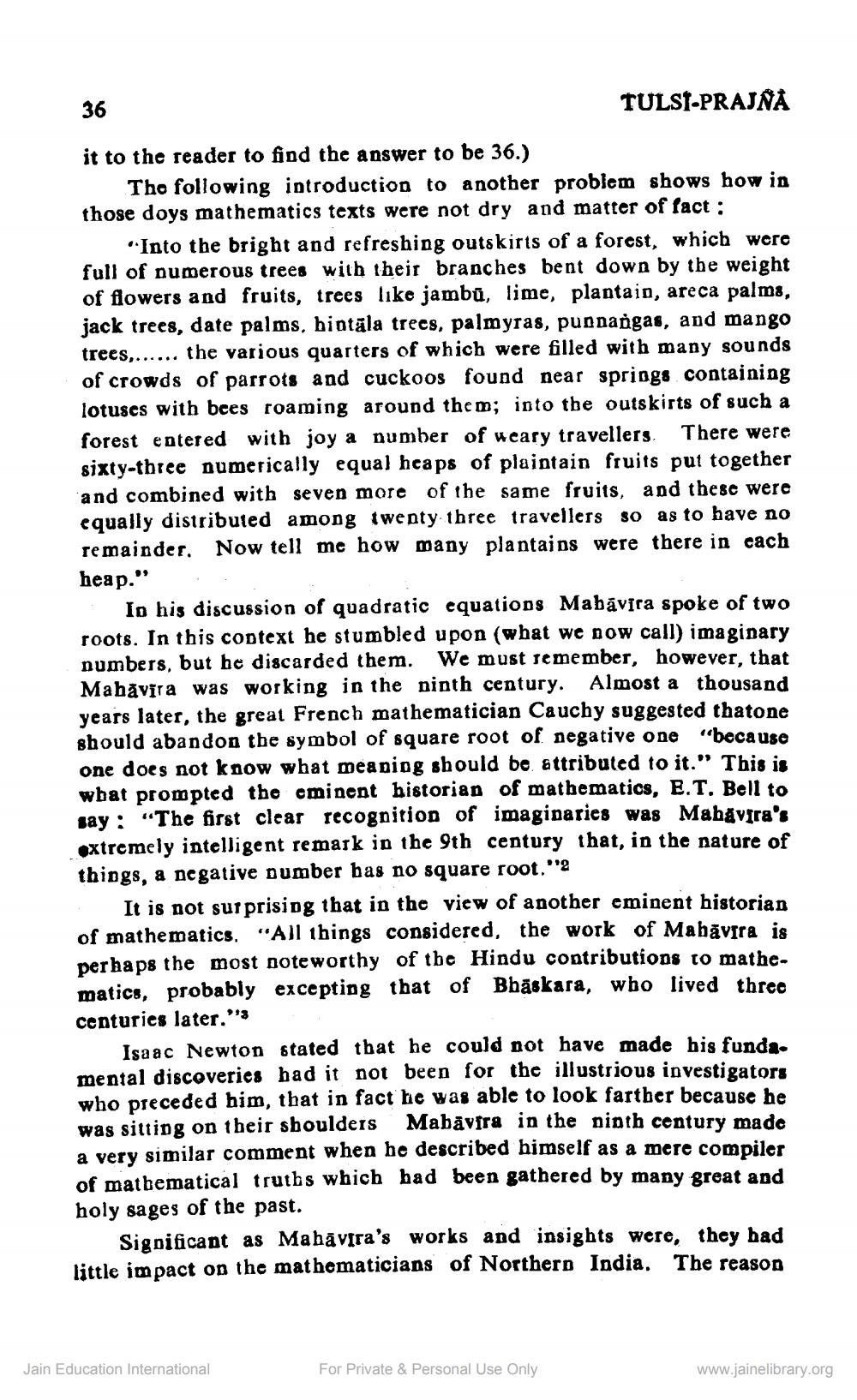________________
36
TULSI-PRAJNA
it to the reader to find the answer to be 36.)
The following introduction to another problem shows how in those doys mathematics texts were not dry and matter of fact :
"Into the bright and refreshing outskirts of a forest, which were full of numerous trees with their branches bent down by the weight of flowers and fruits, trees like jambū, lime, plantain, areca palms, jack trees, date palms, biotala trecs, palmyras, pundangas, and mango trees,...... the various quarters of which were filled with many sounds of crowds of parrots and cuckoos found near springs containing lotuscs with bees roaming around them; into the outskirts of such a forest entered with joy a number of weary travellers. There were sixty-three numerically equal heaps of plaintain fruits put together and combined with seven more of the same fruits, and these were equally distributed among twenty three travellers so as to have no remainder. Now tell me how many plantains were there in cach heap."
lo his discussion of quadratic equations Mabávíra spoke of two roots. In this context he stumbled upon (what we now call) imaginary numbers, but he discarded them. We must remember, however, that Mahavira was working in the ninth century. Almost a thousand years later, the great French mathematician Cauchy suggested thatone should abandon the symbol of square root of negative one "because one does not know what meaning should be attributed to it." This is wbat prompted the eminent historian of mathematics, E.T. Bell to say: "The first clear recognition of imaginaries was Mahavira's extremely intelligent remark in the 9th century that, in the nature of things, a negative number bas no square root."
It is not surprising that in the view of another eminent historian of mathematics. “All things considered, the work of Mabāvīra is perhaps the most noteworthy of the Hindu contributions natics, probably excepting that of Bhāskara, who lived three centuries later."'3
Isaac Newton stated that he could not have made his funda. mental discoveries had it not been for the illustrious investigators who preceded him, that in fact he was able to look farther because he was sitting on their sboulders Mabăvira in the ninth century made a very similar comment when he described himself as a mere compiler of matbematical truths which had been gathered by many great and holy sages of the past.
Sigoificant as Mahavira's works and insights were, they had little impact on the mathematicians of Northern India. The reason
Jain Education International
For Private & Personal Use Only
www.jainelibrary.org




